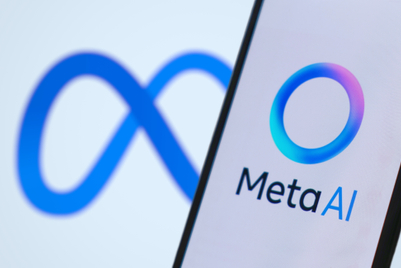
Meghan Lorine was building a following as a fashion influencer when she first started experiencing pain in her abdomen. The episode culminated in a sudden cyst rupture in 2018.
After multiple doctor visits that eventually ruled out IBS and bulimia as root causes of the rupture, Lorine was finally diagnosed with endometriosis, a chronic disease marked by uterine tissue lining growing outside the uterus.
Before too long, her fashion-fixated posts across Instagram, TikTok and Substack were replaced by ones about her experiences living with the disease. Within months, myriad other women joined the conversation. And so a health influencer was born.
“I organically grew a following of girls who were like, ‘Hey, I think I have this, too,’” Lorine recalls. “It’s validating to know that your symptoms are real and that you’re not crazy.”
More and more healthcare creators — patients, physicians, dentists and mental health advocates, among others — have gained a foothold in the medical marketing world owing to their ability to connect with others. But even as they have become valued — and often well-compensated — contributors to the marketing ecosystem, a canny competitor has emerged.
Meet the AI influencer, who can come in the form of a fabricated persona that mirrors an actual person’s likeness or a new “person” entirely. Even in the risk-averse world of healthcare, brands are already starting to partner with them.
“I’m not going to lie: The entire concept of virtual influencers really weirds me out,” Lorine said in a recent TikTok video. “And I can see us running into far greater issues in the future if we continue down this route.”
The rise of the AI influencer
While AI influencers may seem a bit science fiction-y, they’ve been around for years. Take Lil Miquela, for example, who first appeared on Instagram back in 2016. With more than 2.5 million followers on the platform, Lil Miquela is recognizable by her signature space-buns hairstyle and her video game-like quality of existence. She describes herself as a “21-year-old robot living in LA” and posts content on everything from fashion to mental health.
Lil Miquela arrived on the marketing scene in 2019 when she was featured in a controversial Calvin Klein ad alongside model Bella Hadid. Since then, she has starred in ads for A-list brands such as Dior, Prada and BMW.
Other virtual influencers have followed in her path, including Aitana Lopez, Imma Gram and even a blue alien called Zlu, who has nearly 1 million followers on TikTok. Often developed by tech or AI startups, these virtual influencers exist in curated worlds that seem real. And they’re paid well by brands hoping to partner with them.
Most of these partnerships are with fashion brands, but it’s only a matter of time before AI influencers find their way into health-adjacent fields. “We are just now seeing healthcare marketers start to lean into partnerships with real influencers outside of patients and healthcare professionals,” notes Ogilvy Health VP of influencer strategy D’Anthony Jackson. “It’ll be a minute before people start to test with virtual influencers.”
Consumers are primed to engage with them, according to a May survey conducted by the Influencer Marketing Factory. It found that 16% of the 1,000 respondents were “very familiar” with virtual influencers, while 53% followed at least one virtual influencer.
Among respondents who follow virtual influencers, 49% said they did so out of curiosity about the technology, 36% for entertainment value and 30% for their unique perspectives. Those who don’t follow virtual influencers cited a lack of interest (37%) and a preference for actual human relationships (32%).
Meanwhile, social media platforms have practically rolled out the red carpet for virtual influencers. In June, TikTok deployed Symphony, a creative AI suite “designed to make content creation easier than ever for marketers and creators alike,” according to a company statement.
The suite will help brands create their own digital avatars, including stock avatars developed from video footage of real humans. Brands can also develop custom avatars that can ultimately serve as multilingual brand ambassadors.
Health and pharma brand teams have clearly taken notice. Jackson says that virtual influencers have been brought up by clients during brainstorming sessions.
“I’m always like, ‘No, not yet, not yet,’” he says. “But we’re thinking about the opportunities.”
A world with AI influencers
If virtual influencers become a medical marketing mainstay, there will be any number of cascading effects on healthcare messaging. Most obviously, they could diminish the role of human influencers.
“It seems absolutely wild, doesn’t it?” asks Dr. Karan Rajan, a surgeon and healthcare influencer with more than 5.3 million followers on TikTok and 2 million on Instagram.
On TikTok, Rajan offers authoritative, medically sound advice on a variety of health issues. He also addresses TikTok health and wellness trends, from gut-friendly meals to “cortisol face.” Many of his videos have gone viral, with some racking up millions of views and likes.
Rajan speculates that, if healthcare brands warm to the idea of working with virtual influencers, some human creators will sell their likenesses to brands. Those brands can then create AI influencers or avatars who look and sound similar.
But he’s not quite convinced it’ll work. “Maybe I sell you the Dr. Karan brand for $50 million and you build a likeness of me that’s 100% cloned, then you can do whatever with it,” Rajan says. “Maybe that’s the future, but people won’t like it.”
Why? Because the reason to engage with healthcare influencers in the first place is based around the trust and credibility the influencer has built within her online community, Rajan notes. He worries that this bond could fray in a world where virtual influencers flood social media platforms.
“AI influencers wouldn’t have the community real human influencers have,” Rajan says. “People trust doctors, but people may not trust AI influencers. It seems like a shortcut to avoid paying people.“
It also goes without saying that employing a physician avatar to market drugs could raise a host of ethical questions, not to mention feed into the existing belief that Big Pharma is funding doctors. “If you had a bunch of doctors doing ads for pharma, the optics don’t look great,” Rajan continues.
Or, perhaps emboldened by the success of Lil Miquela, marketers might choose to pair human influencers with virtual ones, rather than eliminate the human element entirely. Serim Hwang, an assistant professor of marketing at the Graduate School of Business at Sungkyunkwan University in Seoul, points to Find Your Courage, a campaign for Coach campaign starring Imma Gram alongside rapper Lil Nas X, actress Camila Mendes and rapper Youngji Lee.
The campaign was built around Imma Gram’s journey to find her courage and “be real.” The addition of actual celebrities and influencers helped bridge the AI world to the real one in an effective way, Hwang argues.
“Especially for newer human influencers who are still growing their base, working with virtual influencers could be beneficial,” she says. “In this sense, human influencers can still survive the AI crisis.”
The case for AI influencers
Boosters of AI influencers tout a range of potential benefits for brands. A recent Harvard Business Review article co-authored by Hwang suggested that virtual influencers could prove effective in boosting engagement, reach and diversity — all while minimizing reputation risk and cost.
They found that sponsored posts by virtual influencers resulted in 13.3% more engagement than non-paid posts by virtual influencers. Sponsored posts by human influencers resulted in 2.1% less engagement on average. So while audiences may prefer organic content from human influencers, they may actually prefer sponsored or branded content from virtual ones.
Indeed, virtual influencers could boost the diversity of marketing campaigns. Right now, 68% of human influencers are white; a mere 11% are Latino/Hispanic and 10% are Black.
In terms of cost, a few elite human influencers ask for — and receive — upward of $250,000 per post. A paid post from Lil Miquela, on the other hand, runs about $9,000.
Finally, there’s evidence that a certain subset of people may actually prefer connecting with virtual influencers. A 2023 study published in the International Journal of Human-Computer Studies found that people who scored high on tests of emotional contagion and cognitive empathy were more likely to follow virtual influencers. The virtual ones, they said, offered more of an “escape” from reality.
The ‘opposite of authenticity’?
But amid the talk of diversity and cost savings, the healthcare marketing world remains unswayed by the appeal of virtual influencers. Many marketers believe, in fact, that virtual influencers would do little if anything to improve diversity, reach and engagement.
Take the aforementioned Lil Miquela partnership with Calvin Klein. As part of an attempt to reach LGBTQ+ communities, the commercial featured the virtual influencer kissing Bella Hadid. Instead, it sparked controversy for its failure to include any real members of those communities. Calvin Klein ultimately apologized for the ad.
So while virtual influencers may appear to give marketers a sense of being in control, that control can be fleeting.
“If an AI form is considered female, but it’s really a man behind the scenes controlling what’s coming out of them …. Like, what the heck, you know?” Lorine says with a scoff.
Similarly, cost-saving will always be attractive to brands, in good times and bad. But a market reset fueled by the use of AI influencers would likely lead to reductions in pay for human creators — and perhaps exacerbate existing pay-equity gaps.
A June report issued by SevenSix Agency found that pay equity disparities remain significant in the influencer marketing space. Black influencers earn 34% less than white influencers; South Asian influencers earn 30% less.
“If healthcare brands are to consider virtual influencers, they would have to look at cost efficiencies of working with AI versus working with real health influencers,” Jackson explains. “It opens up this whole conversation of how influencers are being paid.”
In other words: There’s a lot to hash out before AI influencers overrun human ones, in health and elsewhere. Asked why many healthcare marketers remain so skeptical, Jackson responds bluntly. “When I think about real influencers, the two words that come to mind are authenticity and relatability, which humanize a healthcare brand,” he says. “AI virtual influencers are the complete opposite of that.”
A major reason for TikTok’s wild success over the last few years, after all, is the raw, natural and expressive nature — the human nature — of most of its content. A shift to virtual influencers would represent a reversion to manufactured curation, which “is not where the world of social is going,” Jackson says.
Still, Jackson expects healthcare brands to begin experimenting with virtual influencers sooner or later. “You’re going to see some brands test to see if it actually resonates,” he explains. “If it doesn’t work, you scrap it.”
Lorine, for her part, feels secure in knowing that an AI entity could never replicate her real, lived experience of a disease and the pain associated with it.
“Personally, if I were someone who wanted to figure out what was wrong with my body, I wouldn’t look to an AI influencer,” she says. “I would want to talk to a human who can speak to what they’ve gone through and how they got to diagnosis.”
Her plan? To continue to forge bonds within her tight-knit community, bots be damned.
“I love taking calls with anyone who’s curious about endometriosis — ‘Hey, this is what I’m going through and I’m not sure why,’” Lorine adds. “Honestly, if I can help one person, my job’s done.”
The story first appeared on Campaign's sister publication MM+M.


.jpg&h=334&w=500&q=100&v=20250320&c=1)
.jpg&h=334&w=500&q=100&v=20250320&c=1)
.jpg&h=334&w=500&q=100&v=20250320&c=1)




.png&h=334&w=500&q=100&v=20250320&c=1)





.jpg&h=268&w=401&q=100&v=20250320&c=1)


.png&h=268&w=401&q=100&v=20250320&c=1)
